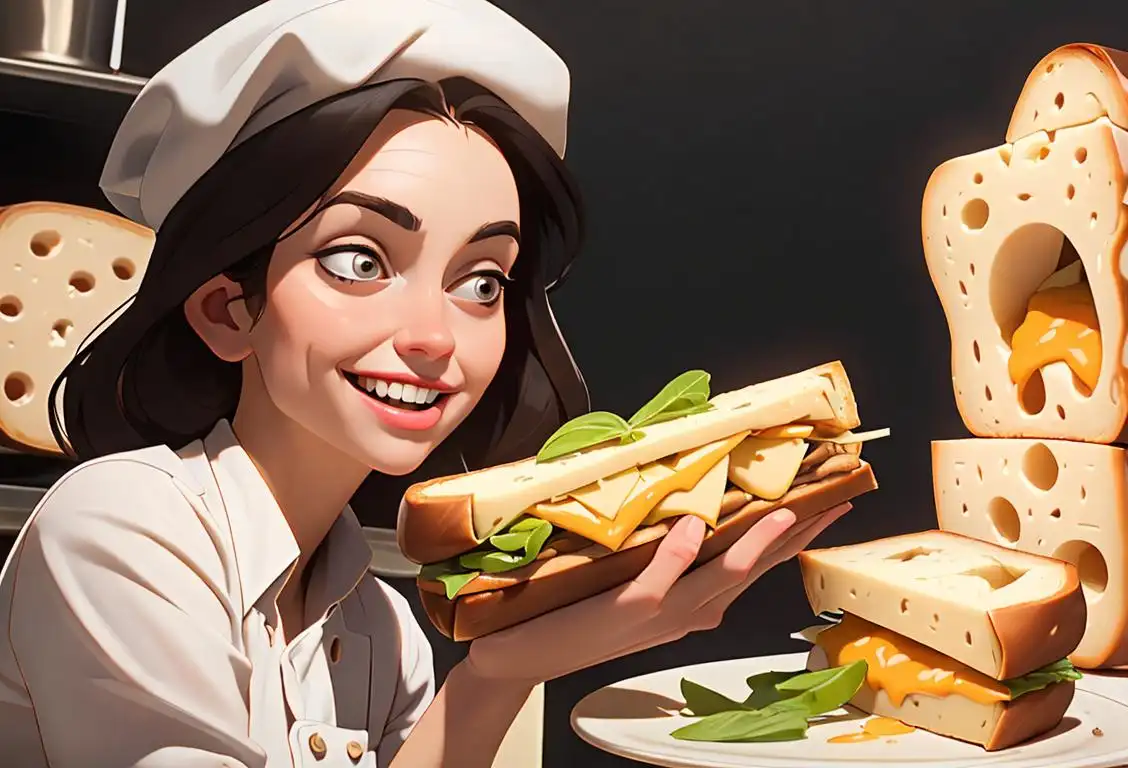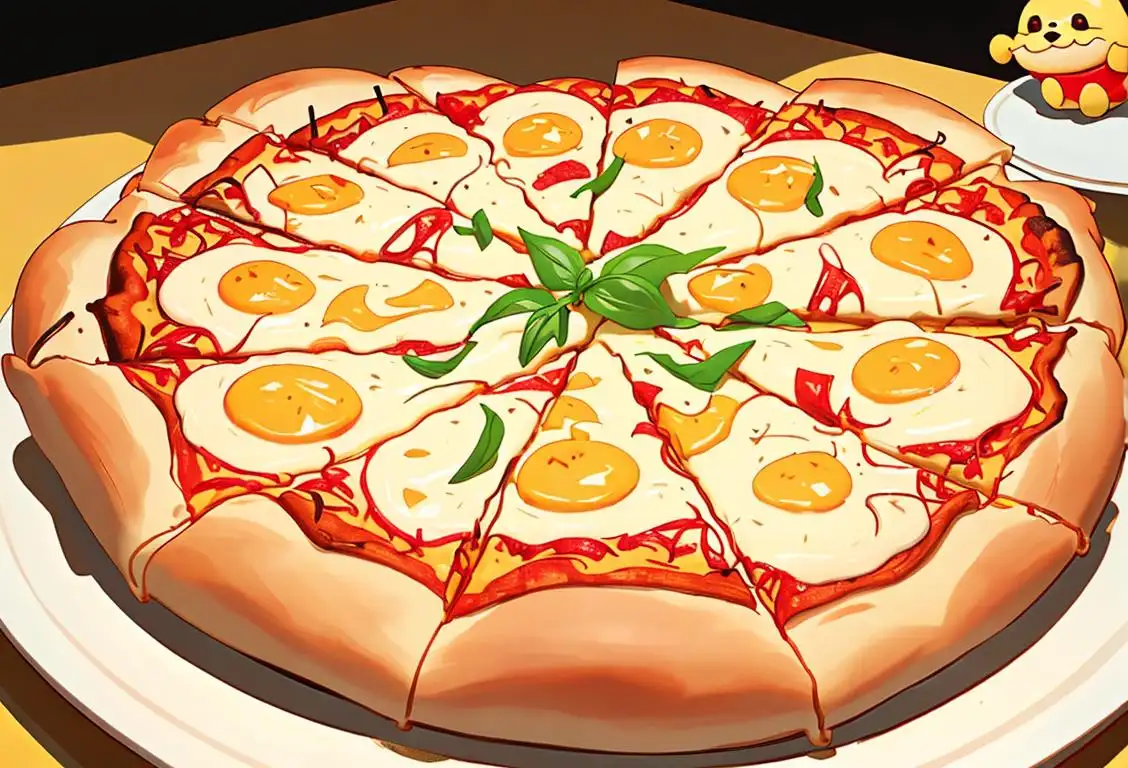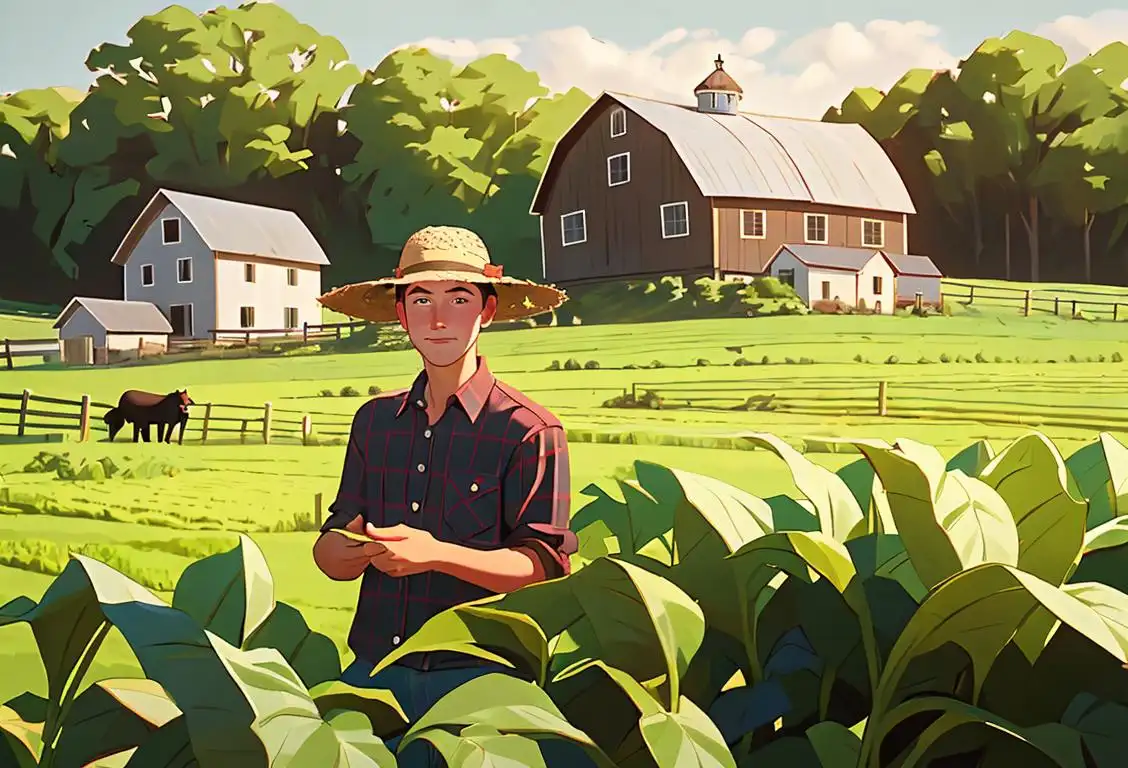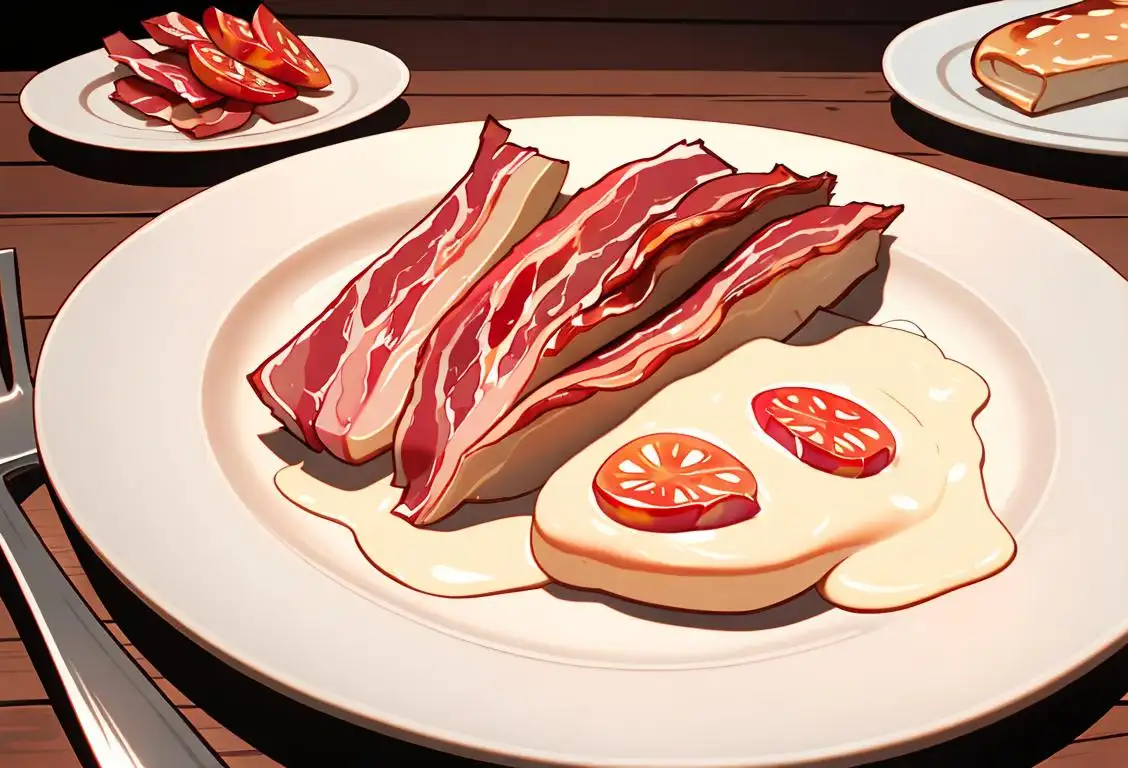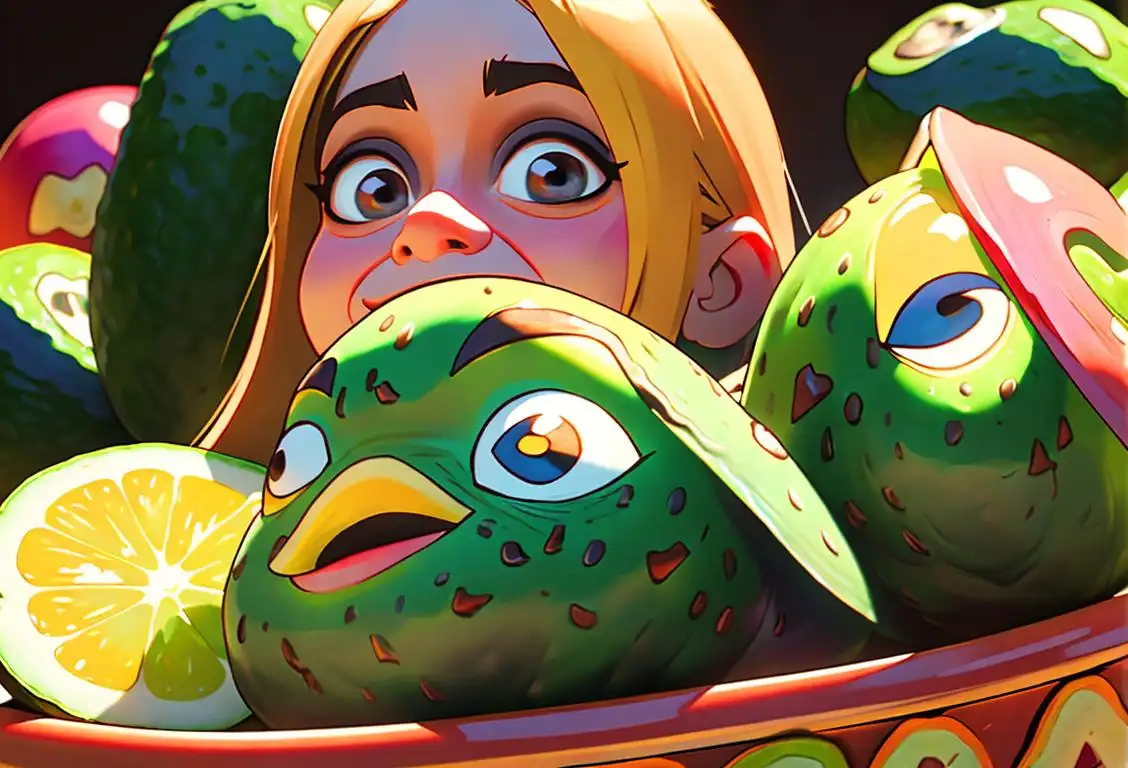National Eat An Extra Dessert Day

Welcome to the deliciously sweet world of National Eat an Extra Dessert Day! It's a day where we throw our diet plans out the window and indulge in all things sugary and decadent. Prepare yourself for a mouthwatering adventure as we dive into the history and celebration of this delectable day.
When is Eat An Extra Dessert Day?
It's national eat an extra dessert day on the 4th September.
The Origins of National Eat an Extra Dessert Day
While we couldn't track down the exact internet history of this delightful day, we can safely assume that it was created by dessert enthusiasts who believe that life is simply better with an extra helping of sweetness! Who can blame them, really?
Some say that National Eat an Extra Dessert Day began as a playful protest against the world's obsession with healthy eating. Others believe it originated as an excuse to spoil ourselves and treat our taste buds to an array of tempting treats.
No matter the origin, this day is now celebrated around the world by dessert fanatics of all ages, all united in their love for the confectionery arts.
Celebrating National Eat an Extra Dessert Day
So how can you fully embrace the spirit of this sugar-filled celebration? Here are a few ideas:
- Host a dessert feast: Invite your loved ones over and indulge in a buffet of sugary delights. From decadent cakes to creamy ice creams, this is the perfect opportunity to bond over sweet treats.
- Try a new dessert recipe: Challenge yourself to create a dessert masterpiece. Whether you opt for a classic apple pie or a trendy Instagram-worthy dessert, the joy is in experimenting and tasting the results.
- Visit your favorite dessert spot: Treat yourself to a visit to that dessert shop you've been eyeing for months. This is the perfect excuse to savor those tantalizing macarons or that mouthwatering gelato you've been dreaming about.
Did You Know?
The world's largest dessert buffet was created in Bangalore, India, offering an astonishing 866 different types of sweets and desserts! Now that's what we call a true dessert lover's paradise.
History behind the term 'Eat An Extra Dessert'
1800s
The Emergence of Desserts
During the 1800s, desserts started gaining popularity as a sweet ending to a meal. Pastry chefs and bakers began creating elaborate and delicious treats to satisfy people's cravings for something indulgent and satisfying. Desserts became a symbol of celebration and enjoyment, bringing people together to conclude their meals on a sweet note.
1620
The Birth of Desserts
In the early 17th century, the term 'dessert' emerged. It originated from the French word 'desservir,' which means 'to clear the table.' Initially, desserts were served as a separate course after the main meal. These delicacies were often sweet treats, such as pastries, fruits, and sugary confections.
1660
The Origins of Dessert
In the year 1660, the term 'dessert' first appeared in the English language. It originated from the French word 'desservir' which means 'to clear the table'. Dessert referred to the final course of a meal, typically consisting of fruits, nuts, and sweet treats.
1800s
The rise of sugar consumption
During the 1800s, the consumption of sugar became more widespread due to technological advancements in sugar production and increased trade. As sugar became more accessible and affordable, people started indulging in sweet treats as a form of luxury.
1700s
The Sweet Tooth Emerges
During the 1700s, the term 'eat an extra dessert' started to gain popularity as people developed a heightened appreciation for sweet treats. Desserts became a symbol of indulgence and pleasure, a way to satisfy the craving for something sweet after a meal. This era marked the rise of desserts as a separate course in meals, rather than being served simultaneously with the main dishes.
1950
The rise of post-war prosperity
After the end of World War II, the United States experienced a period of economic growth and increased consumerism. This newfound prosperity led to a rise in the popularity of desserts as people had more disposable income to indulge in sweet treats.
1740
The Origin of Dessert
In the 18th century, the term 'dessert' emerged to describe the sweet course that concluded a meal. Resembling the French word 'desservir', which means 'to clear the table', the term initially referred to the act of removing the dishes after the main course. As time passed, 'dessert' specifically referred to the sweet treats that followed the main meal, and it became a delightful tradition in many cultures.
1980
The rise of dessert culture
In the year 1980, dessert culture started gaining significant popularity across the United States. People began to appreciate the indulgence and satisfaction that came from consuming sweet treats after a meal. Desserts became a symbol of celebration and enjoyment, with individuals eagerly looking forward to the conclusion of a meal for the blissful experience of a delicious dessert.
1892
The Rise of the Extra Dessert
It was in the late 19th century that the notion of consuming an extra dessert started gaining popularity. As people's taste for sweets and indulgence grew, having an additional serving of dessert became a way to satisfy one's cravings and indulge in the pleasures of life. This concept soon became associated with celebrating special occasions or simply as a way to treat oneself.
1700s
Expanding Variety of Desserts
During the 1700s, desserts began to encompass a wider range of options. Pastries, cakes, puddings, and ice creams became popular choices among the upper class. The concept of an extra dessert wasn't prevalent at this time, as dessert itself was already considered a delicious indulgence.
1995
The concept of 'eat an extra dessert' emerges
Around the year 1995, the concept of 'eat an extra dessert' began to emerge. As the dessert culture thrived, people started infusing more enthusiasm into their culinary experiences. This led to the development of a notion that enjoying one serving of dessert might not be enough to fully satisfy their sweet tooth cravings. The idea of indulging in an additional dessert gained traction, particularly among individuals who had a deep appreciation for desserts.
1900s
Desserts as a Symbol of Prosperity
In the early 1900s, desserts became more accessible to a larger portion of society due to advancements in technology and mass production. As a result, desserts began to be associated with wealth and prosperity. Enjoying a dessert after a meal was seen as a sign of abundance and a way to showcase one's social status.
1800s
The Victorian Era's Sweet Delights
In the 1800s, the concept of eating an extra dessert became even more prevalent as desserts took center stage in the Victorian era's lavish dining culture. The Victorians were known for their elaborate feasts, and desserts played a significant role in displaying opulence and refinement. Puddings, cakes, and pastries were created with intricate designs and rich flavors, tempting people to savor an extra serving.
1830
Increasing Popularity of Desserts
During the early 19th century, desserts gained widespread popularity among the upper classes. The availability of refined sugar, exotic fruits, and a variety of new ingredients contributed to the growth of dessert culture. People started to enjoy desserts not only as a way to satisfy their sweet tooth but also as a symbol of indulgence and social status.
1964
The debut of the 'eat an extra dessert' campaign
In 1964, a famous dessert manufacturer launched a marketing campaign encouraging people to 'eat an extra dessert.' The goal of the campaign was to increase sales and promote the enjoyment of indulgent desserts as a form of celebration and pleasure.
1901
The advent of desserts as a separate course
In the early 20th century, the concept of serving desserts as a separate course after the main meal gained popularity. This was influenced by French cuisine, where dessert was considered an important part of the dining experience. It became common to end a meal with a sweet treat.
1920s
The Rise of Consumerism
In the 1920s, consumerism started to gain momentum, and society became more prosperous. The culture of excess and indulgence was on the rise. People began to indulge in more than one dessert on occasion, embracing the hedonistic pleasure of savoring multiple sweet treats after a meal.
1950s
The Rise of Consumer Culture
In the 1950s, consumer culture boomed, and people developed a stronger desire for convenience and indulgence. Desserts became more diverse, with an array of options available, including cakes, pies, ice cream, and pastries. Eating a dessert was no longer seen as a luxury reserved for special occasions; it became a part of everyday life, offering a small moment of pleasure and enjoyment.
2008
Growing acknowledgment of self-care and moderation
By 2008, there was a growing acknowledgment of the importance of self-care and moderation in all aspects of life, including food choices. People began to realize that indulging in excessive amounts of sweets regularly might have negative effects on their health. Consequently, 'eat an extra dessert' took on a new meaning. Instead of encouraging excessive consumption, it became a reminder to treat oneself occasionally while still maintaining a balanced and healthy lifestyle.
1918
Dessert as a Reward
In 1918, World War I was coming to an end, and people were finding ways to boost morale. The tradition of using dessert as a reward for good behavior and as a treat during tough times began to emerge. It became a way to lift spirits and provide a sense of comfort amidst the hardships of war.
1956
Promotion of Dessert Variety
In the 1950s, an emphasis on dessert variety and experimentation began to emerge. Cookbooks, magazines, and culinary shows started featuring a wide range of desserts, showcasing the creativity and skills of pastry chefs and home cooks alike. This increased exposure to diverse dessert options further fueled the desire to indulge in an extra dessert.
1940s
Desserts as morale boosters during World War II
During World War II, desserts took on an additional role in boosting morale among soldiers and civilians. Sweet treats provided a momentary escape from the hardships of war and became symbols of comfort and pleasure. Bakeries and patisseries thrived as people sought solace in indulgent desserts.
1900s
The Rise of Modern Desserts
As the 1900s dawned, the popularity of desserts continued to soar. With advancements in culinary techniques and ingredients, a myriad of new desserts emerged, enticing people to indulge and eat an extra dessert. From decadent chocolate creations to light and airy soufflés, desserts became an art form that delighted the senses and created lasting memories.
1976
National Dessert Day is established
In 1976, the National Confectioners Association designated October 14th as National Dessert Day in the United States. This day was created to celebrate the wide variety of desserts and highlight their cultural significance. It became an opportunity for people to indulge in their favorite sweets, including an extra dessert if desired.
1960s
The rise of convenience desserts
With the advent of the 1960s and the increased availability of processed and convenience foods, desserts also became more convenient and accessible. Pre-packaged desserts, frozen treats, and instant mixes made it easier for people to enjoy sweet treats without much effort. Desserts became a symbol of convenience and modernity.
2008
Social media and dessert trends
With the rise of social media platforms in the late 2000s, people started sharing their dessert experiences and creations online. This led to the emergence of dessert trends like extravagant milkshakes, over-the-top cakes, and gourmet ice creams. The trendiness and visual appeal of desserts encouraged people to embrace the idea of eating an extra dessert as a way to experience new and exciting flavors.
2000s
Embracing Foodie Culture
In the 2000s, with the advent of foodie culture and the rise of social media, the term 'eat an extra dessert' gained a resurgence in popularity. Food enthusiasts and influencers embraced the joy of indulging in delicious desserts and shared their experiences online, inspiring others to follow suit. Eating an extra dessert became a symbol of savoring life's pleasures and embracing self-care in the form of enjoying delectable sweets.
2015
The birth of National Eat an Extra Dessert Day
In 2015, National Eat an Extra Dessert Day was officially established to celebrate the joy and indulgence of desserts. This special day encourages individuals to give themselves permission to enjoy an additional serving of their favorite dessert guilt-free. It serves as a reminder to take a break from the rigors of daily life and indulge in a delightful treat that brings happiness and satisfaction.
1950s
The Post-War Boom
Following the end of World War II, the 1950s marked an era of increased affluence and economic growth. The post-war boom brought about a greater availability of ingredients and diverse dessert options. Consumption of multiple desserts, like pies, cookies, and cakes, became more common as families celebrated their newfound prosperity.
1983
The Birth of 'Eat an Extra Dessert' Phrase
The phrase 'eat an extra dessert' gained popularity in the early 1980s as a lighthearted encouragement to indulge in sweets beyond the customary portion. The term captured the essence of embracing one's desires and treating oneself, often in the context of celebrating a special occasion or simply enjoying life's little pleasures.
Late 20th Century
The Modern Dessert Culture
As the 20th century progressed, the concept of dessert expanded even further. Dessert trends evolved, reflecting changing tastes and influences from around the world. The idea of 'eating an extra dessert' emerged as a lighthearted notion, encouraging people to indulge their sweet tooth a little more. It reminds us of the joy of treating ourselves to an extra serving of our favorite dessert, forgetting the rules momentarily to savor the deliciousness of life.
1960
The Rise of Diet Culture
In the 1960s, dieting and calorie-consciousness became increasingly popular. As people started to focus more on maintaining a healthy lifestyle, indulging in desserts became associated with guilt and indulgence. However, there was a growing realization that occasionally indulging in an extra dessert could be a source of pleasure and enjoyment.
Present
Continued celebration and innovation
Today, the concept of 'eat an extra dessert' continues to be celebrated and appreciated worldwide. It has become a way for people to explore new dessert creations, experiment with flavors, and support local bakeries and pastry chefs. National Eat an Extra Dessert Day serves as a platform to showcase the diverse range of desserts and the immense joy they bring. It stands as a reminder that treating oneself to a little extra sweetness can enhance happiness and provide moments of pure culinary delight.
1980s
Desserts as a form of self-indulgence
In the 1980s, desserts became synonymous with self-indulgence and decadence. Inspired by popular culture and media, elaborate and extravagant desserts became a trend. Dessert-focused restaurants and bakeries gained prominence, offering extravagant cake slices, rich pastries, and other indulgent sweets.
2008
Embracing Dessert as a Celebration
In recent years, there has been a shift in the perception of desserts. People began celebrating special occasions by indulging in extra desserts. Birthdays, anniversaries, and holidays became opportunities to treat oneself to an additional sweet delight. This shift signifies a broader appreciation for the role of desserts in creating memorable experiences and fostering bonds.
2021
Embracing balance and moderation
In recent years, there has been a shift towards promoting balance and moderation in diet and lifestyle. While indulging in an extra dessert can still be enjoyed on special occasions or as a treat, the emphasis is placed on adopting a balanced approach to overall well-being. This includes making mindful choices when it comes to portion sizes, ingredient quality, and the inclusion of nutritious foods in the diet.
1980s
Indulgence and Dessert Trends
The 1980s witnessed a surge in the popularity of desserts driven by the rise of celebrity chefs and the emergence of food trends. Indulgence and decadence were expressed through elaborate and multi-layered desserts. This movement further paved the way for the idea of enjoying an extra dessert, as people sought to explore different flavors and techniques.
2000s
Embracing desserts as a guilt-free pleasure
In the 2000s, there was a shift in the perception of desserts as an indulgence to a guilt-free pleasure. Health-conscious individuals sought healthier alternatives and innovative ways to enjoy desserts without compromising on taste. The rise of dietary restrictions and food trends led to the introduction of vegan, gluten-free, and other healthier dessert options.
Present Day
Embracing Treat Yourself Culture
In the present day, the concept of 'eat an extra dessert' has become synonymous with indulgence and self-care. It reflects the modern 'treat yourself' culture, encouraging people to enjoy and savor the little pleasures in life. Whether it's celebrating a special occasion or simply giving in to a craving, eating an extra dessert has become a delightful way to seek extra enjoyment in our meals.
Present Day
Eat an extra dessert day
Today, 'Eat an Extra Dessert Day' is celebrated on September 4th each year. It serves as a reminder to indulge in the sweet delights that bring joy and happiness. Whether it's treating yourself to an extra slice of cake or trying a new dessert recipe, this day encourages people to savor the moment and celebrate the cultural significance of desserts in our lives.
Did you know?
The world's largest dessert buffet offered 866 different types of sweets and desserts in Bangalore, India.Tagged
food fun loved onesFirst identified
4th September 2015Most mentioned on
4th September 2018Total mentions
64Other days
Biscuit Day
Cheese Lovers Day
Cheese Pizza Day
Agriculture Day
Bacon Day
Medal Of Honor Day
Pumpkin Day
Foundation Day
Guac Day
Drink A Beer Day

